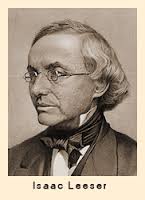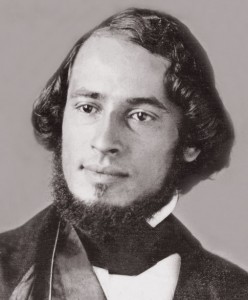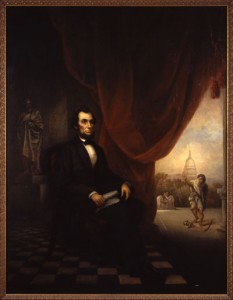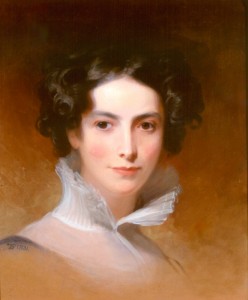From the Lampert Library
 Did you know that until Isaac Leeser translated the Torah into English in 1845 the accepted translation used by Jews in the United States had been the King James Bible? Leeser, born in what is now Germany in 1806, immigrated to America in 1824 and a few years later became the hazzan of Mikveh Israel in Philadelphia. Determined to innovate, he began giving sermons in English. His translation of the Torah- and later the entire TANAKH- became the standard for
Did you know that until Isaac Leeser translated the Torah into English in 1845 the accepted translation used by Jews in the United States had been the King James Bible? Leeser, born in what is now Germany in 1806, immigrated to America in 1824 and a few years later became the hazzan of Mikveh Israel in Philadelphia. Determined to innovate, he began giving sermons in English. His translation of the Torah- and later the entire TANAKH- became the standard for  the English speaking world for decades. He founded the first American Jewish publishing house which was the predecessor of the Jewish publication Society. His translation was superseded by the 1917 translation by the Jewish Publication Society.
the English speaking world for decades. He founded the first American Jewish publishing house which was the predecessor of the Jewish publication Society. His translation was superseded by the 1917 translation by the Jewish Publication Society.
 Did you know that Solomon Nunes Carvalho, born in Charleston, SC in 1815, accompanied explorer Charles Fremont to California? Trained as an artist and photographer, Nunes stayed in California for some time and eventually returned to the east coast where he became a well-known artist and daguerreotypist. His 1865 painting of Lincoln recalls the story of the Greek Diogenes searching for an honest man. He’s the only Jewish artist known to have painted the president.
Did you know that Solomon Nunes Carvalho, born in Charleston, SC in 1815, accompanied explorer Charles Fremont to California? Trained as an artist and photographer, Nunes stayed in California for some time and eventually returned to the east coast where he became a well-known artist and daguerreotypist. His 1865 painting of Lincoln recalls the story of the Greek Diogenes searching for an honest man. He’s the only Jewish artist known to have painted the president.
Did you know that Rebecca Gratz of Philadelphia was painted more than once by the renowned portrait painter Thomas Sully? According to the exhibit organizers, each time Sully painted his subject, she became younger and more beautiful. Rebecca Gratz was said to have been the inspiration for Rebecca, the heroine of Sir Walter Scott’s Ivanhoe. She was instrumental in founding several civic organizations and established the first Jewish Sunday School. She never married, presumably because she loved a non-Jewish man but would not marry out of her faith.
Gratz College, the first independent school for Jewish studies in the United States was named for her. Located in Melrose Park, Pennsylvania, the college today offers programs including those leading to graduate degrees focusing on Jewish education and communal work.
These facts-and many more- are revealed in the Princeton University Art Museum Exhibition “By Dawn’s Early Light: Jewish contributions to American culture from the nation’s founding to the Civil War.”
The exhibit spotlights paintings, sculptures, and literature both secular and religious from the earliest Jewish communities. Available is a huge, beautifully reproduced catalog of the exhibit.
To see this small but worthy exhibit, take a ride down to Princeton before June 12 when the exhibit closes.
- Is It Passover Yet? - Thu, Apr 18, 2024
- MESH Report April 9, 2024 - Thu, Apr 11, 2024
- Guess Who? - Wed, Mar 13, 2024

